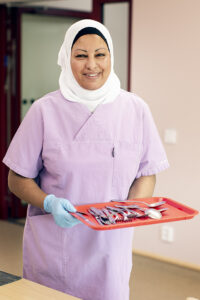Food and integration in Katrineholm: A successful combination
28 September 2023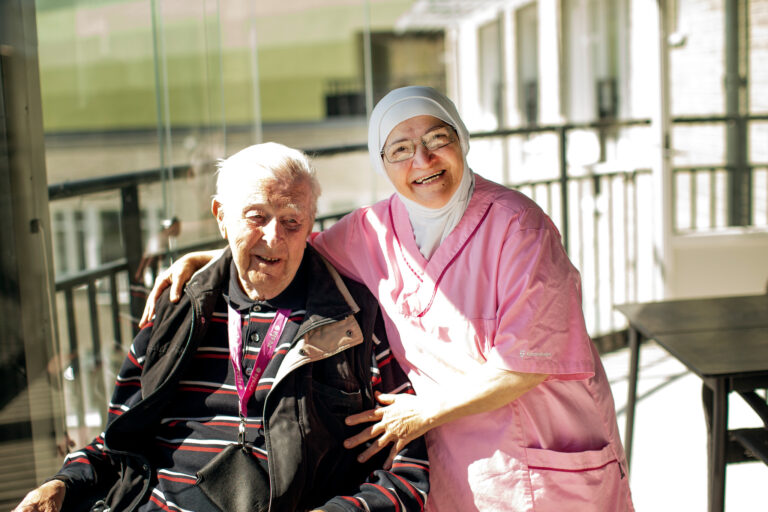
Publicerad 12:33
Over recent years, Katrineholm Municipality has implemented two projects funded by the European Social Fund targeted at migrants who have been outside the labour market for an extended period. A majority of participants went on to find work. The factors behind success were intensive support and a sense of community.
Over the last two years, Katrineholm Municipality has launched two projects in collaboration with the local business community with support from the European Social Fund. The first project, Food and Integration in Katrineholm (MIKA), started in 2018. The project’s approach and objective are clear from its name. MIKA was targeted at migrants who, despite having been in Sweden for many years, remained far from the labour market. By combining training with work placements in green industries, the project was intended to bring participants closer to obtaining work. Some participants went on to the MIKA YB project, which focused on learning occupational Swedish and occupational skills. Huda Abou Table took part in both MIKA and MIKA YB – with considerable success.
“I arrived in Sweden in 2011 having never worked in my homeland. In Sweden, I had only ever had work placements but, thanks to MIKA, in 2019 I got my first job,” says Huda.
“I don’t want to retire. What would I do, just sit around at home? No, I refuse.”
She now works in the kitchen at the Dufvegården residential home for the elderly, which she thoroughly enjoys. Huda beams when she describes how she prepares breakfast, serves food, washes up and bakes bread for the residents. She is approaching retirement age but would like to continue working.
“I don’t want to retire. What would I do, just sit around at home? No, I refuse,” says Huda with a laugh.
In addition to finding work, Huda has also improved her Swedish.
“I have many grandchildren. Most of them live in Sweden and now I can speak Swedish to them at last.”
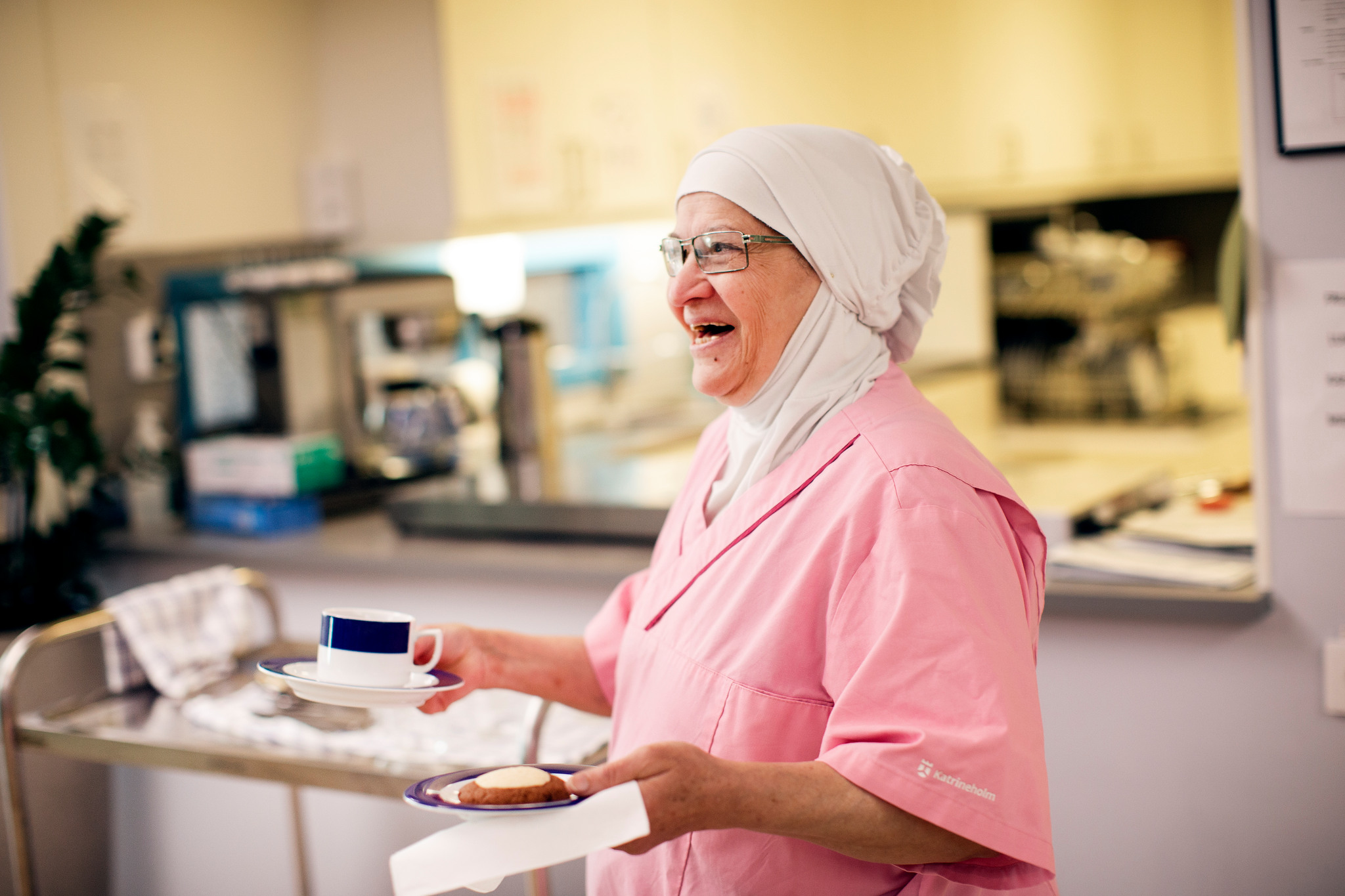
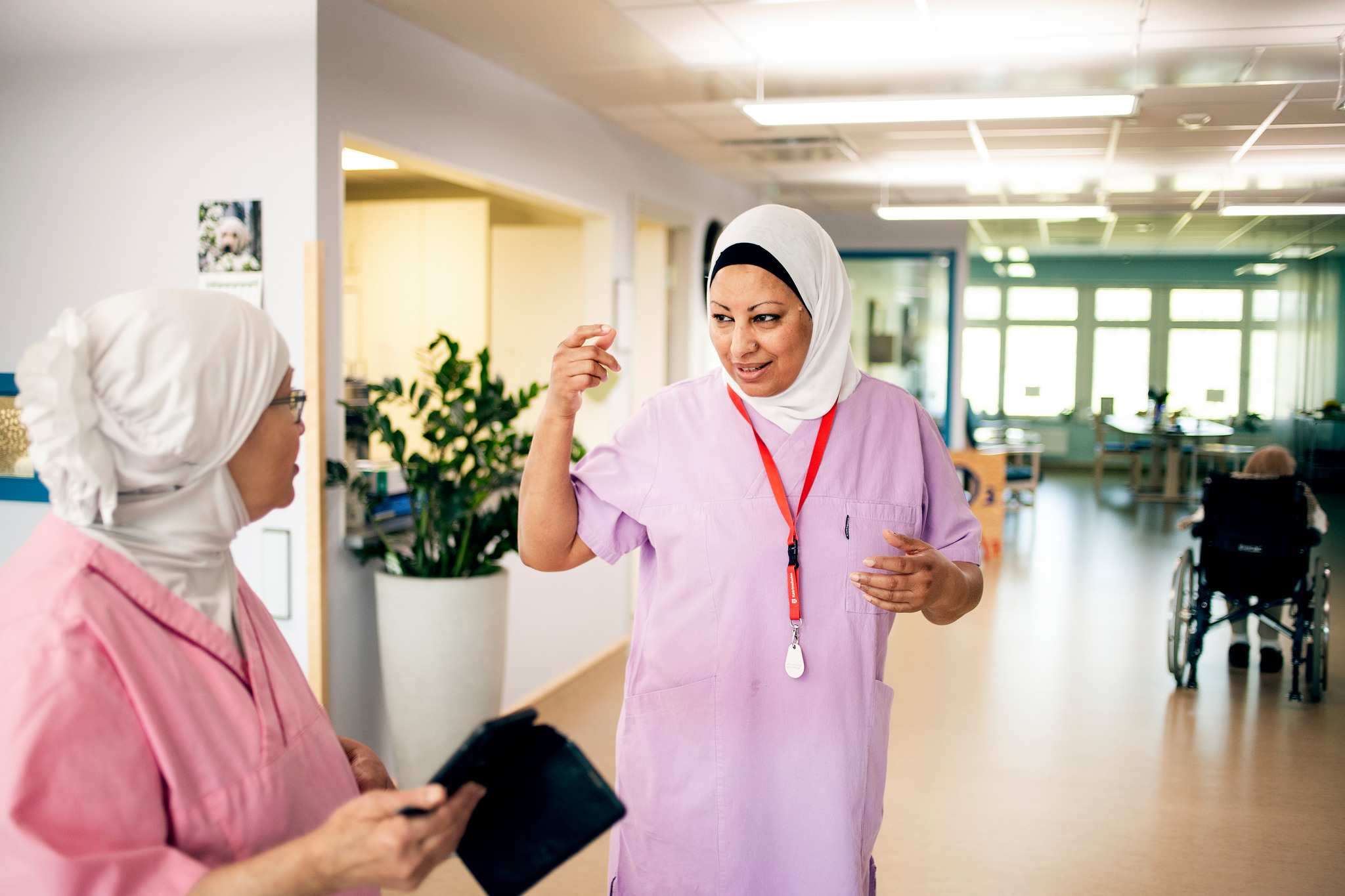
Taking advantage of participants’ experiences
Keriya Rezgka works in the kitchen in another section of Dufvegården. Like Huda, she too had been long-term unemployed before joining the MIKA YB project. However, she had a wealth of experience of cooking and baking, including from a work placement at an Italian bakery before arriving in Sweden.
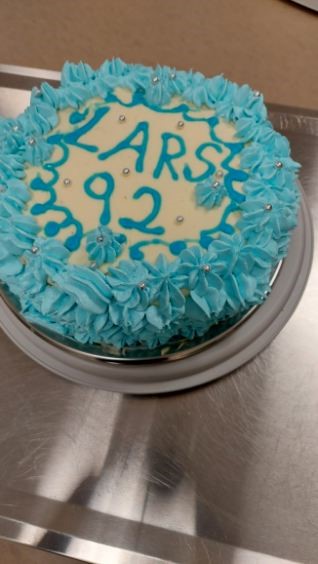
“Now I bake Italian pastries for the residents. On their birthdays they get birthday cake,” she says, showing photographs of a few of her previous creations.
Keriya Rezgka is delighted to have found work through the project.
“MIKA YB has meant so much to me, it was fantastic. I’d love to see the project come back.”
The two projects were clearly much-appreciated by participants. Project manager Kerstin Thuresson also testifies that many people miss MIKA.
“The participants I meet are very satisfied with the work or studies they have gone on to after MIKA. That said, they miss the support the project gave them, and the sense of community we enjoyed.”
Intensive support one success factor
During the project, participants received intensive support over a long period. In addition to an individual plan and placement, they met in groups for theory lessons and to speak Swedish. Approximately 40 people took part in MIKA and 30 in MIKA YB. Today, the majority work or have gone on to further studies.
“The risk with a project with many participants is that the activities will not lead to anything. In the end, it is the participants who pay the price. We saw that with fewer participants we could achieve more. Even if all of the participants had the same goal – to get closer to the labour market – we still needed individual subgoals,” says Thuresson.
Support from the European Social Fund (ESF) has also been crucial, not only with regard to funding.
“The MIKA project would probably not have been implemented without support from the ESF. We could always bounce ideas of their case officers and ask for advice. They were very responsive when we were reaching the end of the first project and realised that many participants would benefit from a continuation. They deserve a great deal of praise – their support has been fantastic.”
The MIKA project is over but the lessons learned and methods developed in the project live on in other projects and activities.
“Katrineholm Municipality now has several projects based on methods from MIKA, including Framtidssteget [Step into the Future], also funded by the ESF, which focuses on strengthening the individual’s position on the labour market,” concludes Thuresson.

